
This sundial at the parish church of Puch bei Weiz shows Saint Oswald with a raven in his hand. The church is consecrated to this saint, who ruled as a King of Northumbria in the years 634-642.
You only see what you know (Goethe)

This sundial at the parish church of Puch bei Weiz shows Saint Oswald with a raven in his hand. The church is consecrated to this saint, who ruled as a King of Northumbria in the years 634-642.
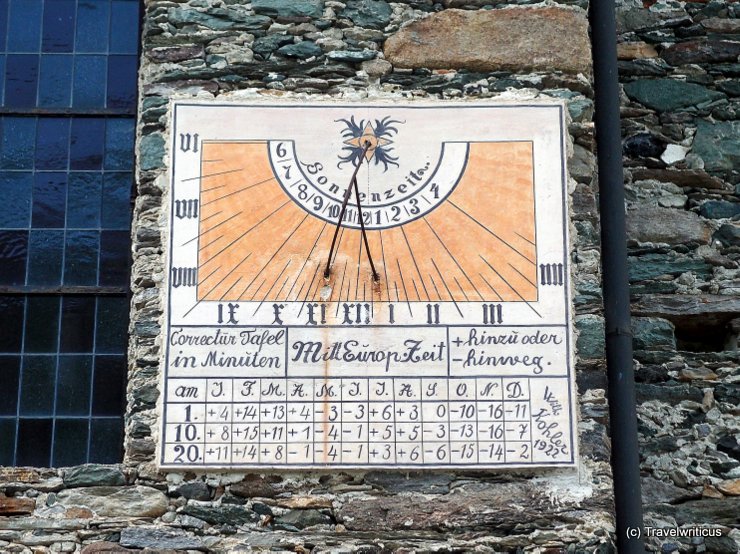
An intriguing version of a sundial seen at a chapel in Hinterbichl, a district in Prägraten am Großvenediger. The table provides info on how to calculate the exact time considering the different altitudes of the sun during the year.
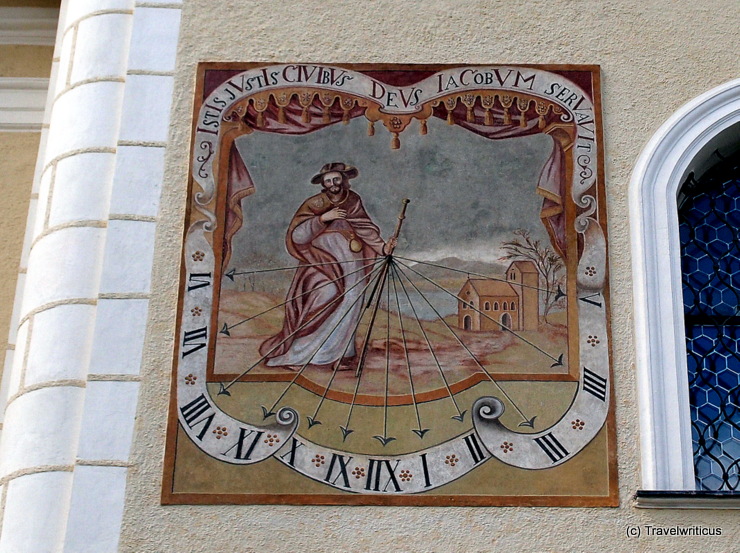
This sundial on the parish church of Tamsweg was created in 1741. It shows James, son of Zebedee (Jakobus, Sohn des Zebedäus) The saint is also known as James the Great (Jakobus, der Ältere). The depiction of this structure refers to the fact that James is the patron of the church. [German]

Sundial fans find this piece on an outer wall of St Mary’s Church in Maria Saal. The church is also known as Propstei- und Wallfahrtskirche Mariae Himmelfahrt or Maria Saaler Dom. [German]
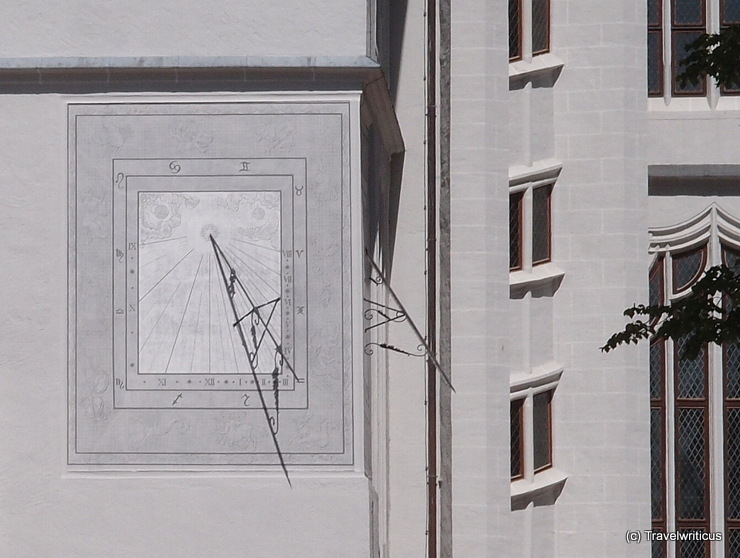
This sundial is one of two pieces attached to a corner of Albrechtsburg. The Albrechtsburg is deemed one of the first palace buildings in Germany. Even from a distance, you can see the towering white walls of the late Gothic castle when approaching Meissen. [German]
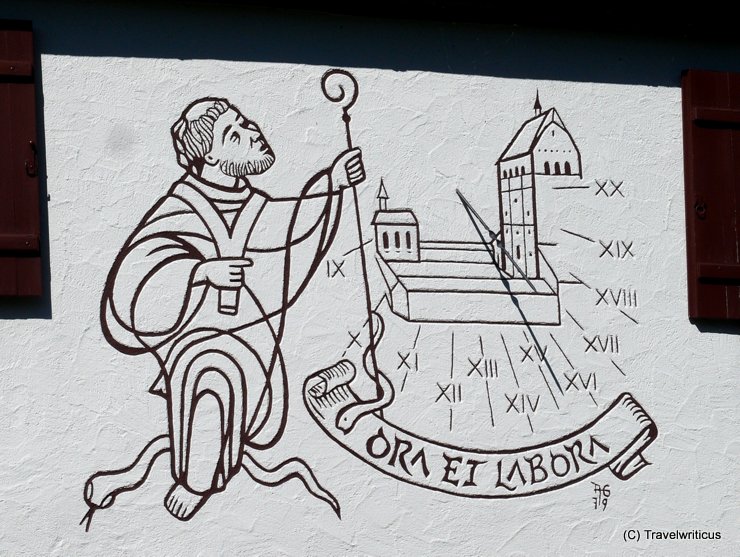
This sundial is located on a wall of Reichenau Abbey on Reichenau Island. It shows not only the motto ‘Pray and Work’ (ora et labora) but also Saint Pirmin, the founder of Reichenau Abbey. The two snakes refer to the fact that he is considered to be a patron against snake bites.
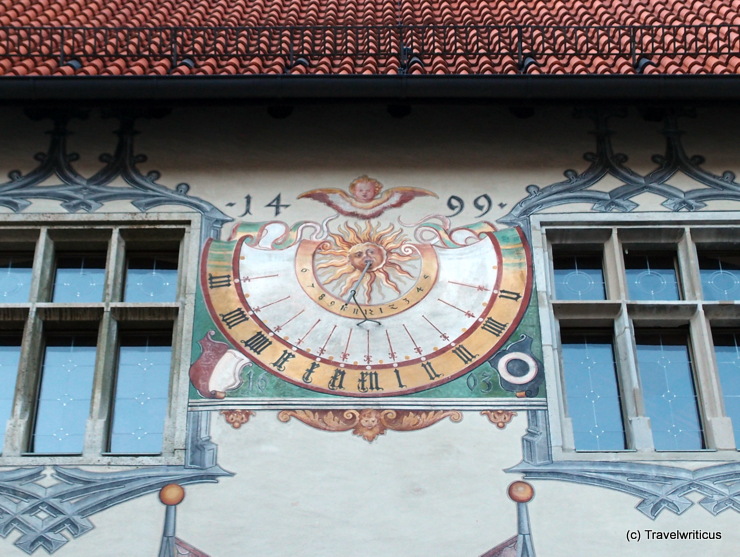
This sundial is located in the courtyard of the High Castle (Hohes Schloss) in Füssen. Around the windows, one can see a small piece of the Trompe-l’œil for which the castle is known. It is assumed that these paintings were made around 1499 by the painter Fidelis Eichele.
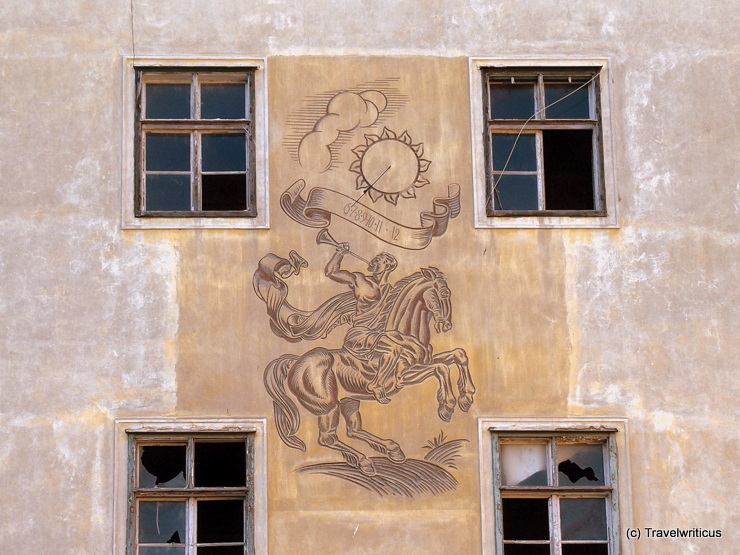
A sundial displaying an equestrian seen at the former Augustinian monastery (Augustinereremitenkloster) in Bruck an der Leitha,
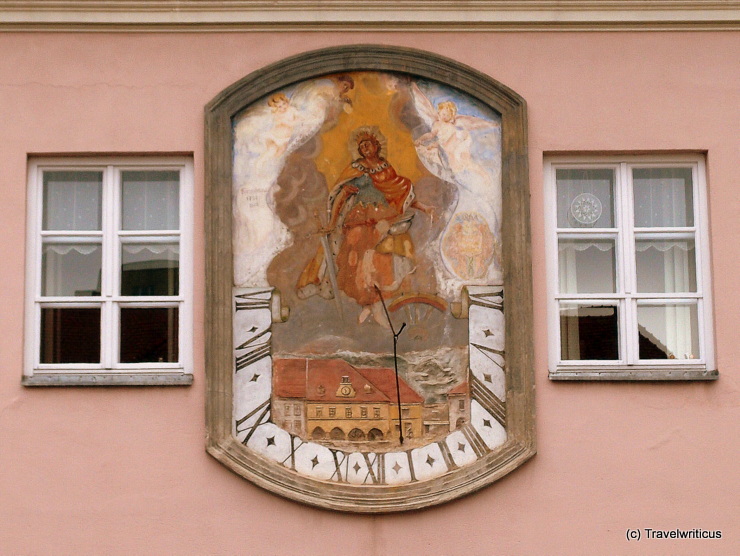
At the sundial located at the Pfarrheim (parish community centre) of Knittelfeld one can not only see Saint Catherine but also the no longer existing town hall. The late Gothic town hall was destroyed in the Second World War.
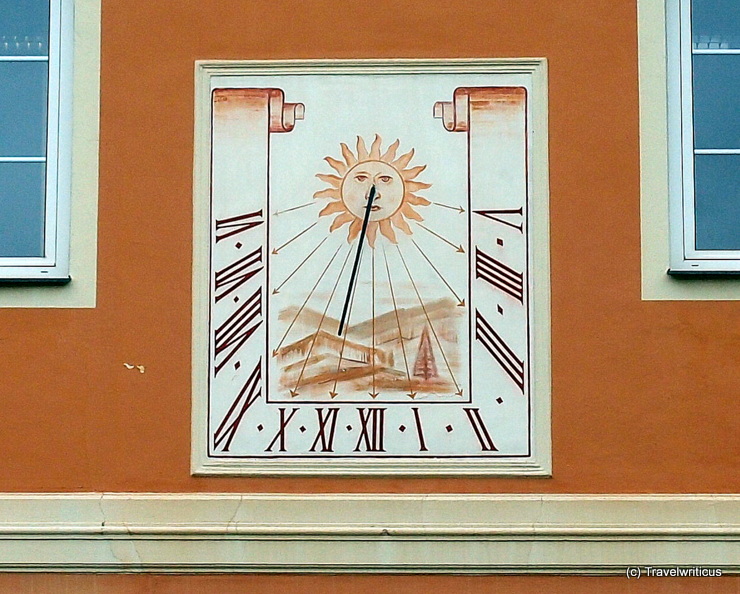
This sundial is located at a building generally known as Hofrichterstöckl. The 17th century edifice is covered with a hip roof and offers an early Baroque entrance portal labeled with the year of construction in 1640.

This sundial is located at the former Neuberg Abbey in Neuberg an der Mürz. Even though Neuberg Abbey (Stift Neuberg) isn’t a Cistercian monastery any more it has retained its medieval character to a high degree.
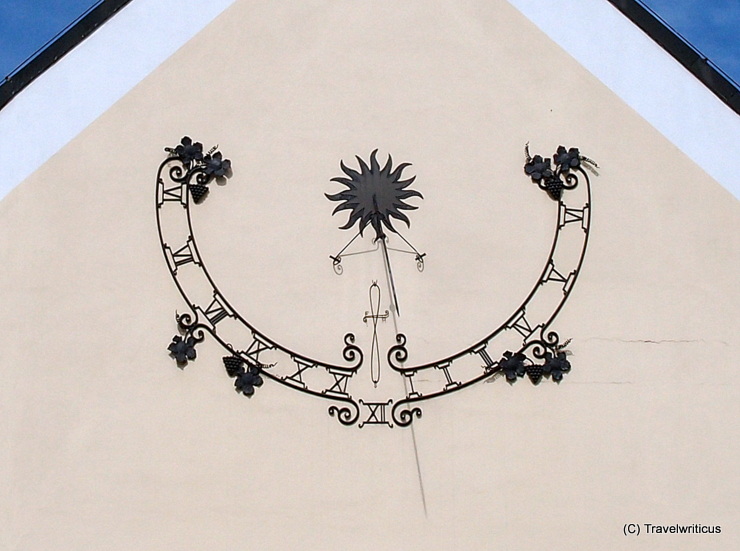
Sundial with grapes in Poysdorf. The grapes refer to the fact that Poysdorf is famous for its vineyards surrounding the place.